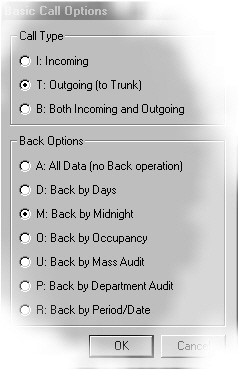|
User Friendly, then even friendlier - The CallScope family of programs are 32-bit products using the industry standard Windows interface. However, for those users that are not computer comfortable you can assign a simple single key interface.
CallScope employs all the visual resources of the Windows graphical user interface, but with the simplicity of a character interface. CallScope's main screen can be configured with many combinations of single keystroke buttons - which means users can perform operations easily. And, it's adaptable to the needs of different users.
Display Modes
There are four Mode buttons - they determine whether the calls displayed are selected by Extension, Room, Department or Guest. You don't have to have all the mode buttons present, only the ones you need. |
|
 |
The Back options allow the user to be selective in the calls reviewed. It's not helpful to fill the grid with all the calls in the database, so the Back option presents the calls in convenient chunks.Each mode buttons can be configured to operate in one of a number Back states, as illustrated.
- The Call Type options determine which type of call is selected. When billing a guest, for example, only the outgoing calls will be of interest.
- The Back Options determine how far back to look for calls. The Midnight option, for eample, will initially display today's calls, back as far as midnight. Pressing the Back button will step back in 24 hour periods from midnight, so you can see each days calls. The Occupancy option steps back by whole occupancies, so you can see all the calls for a single occupancy.
The back option can be changed quickly by using the Option button. For example, the user can press OM to switch to Midnight option.
The Back and Forward buttons then step back or forward. |
|